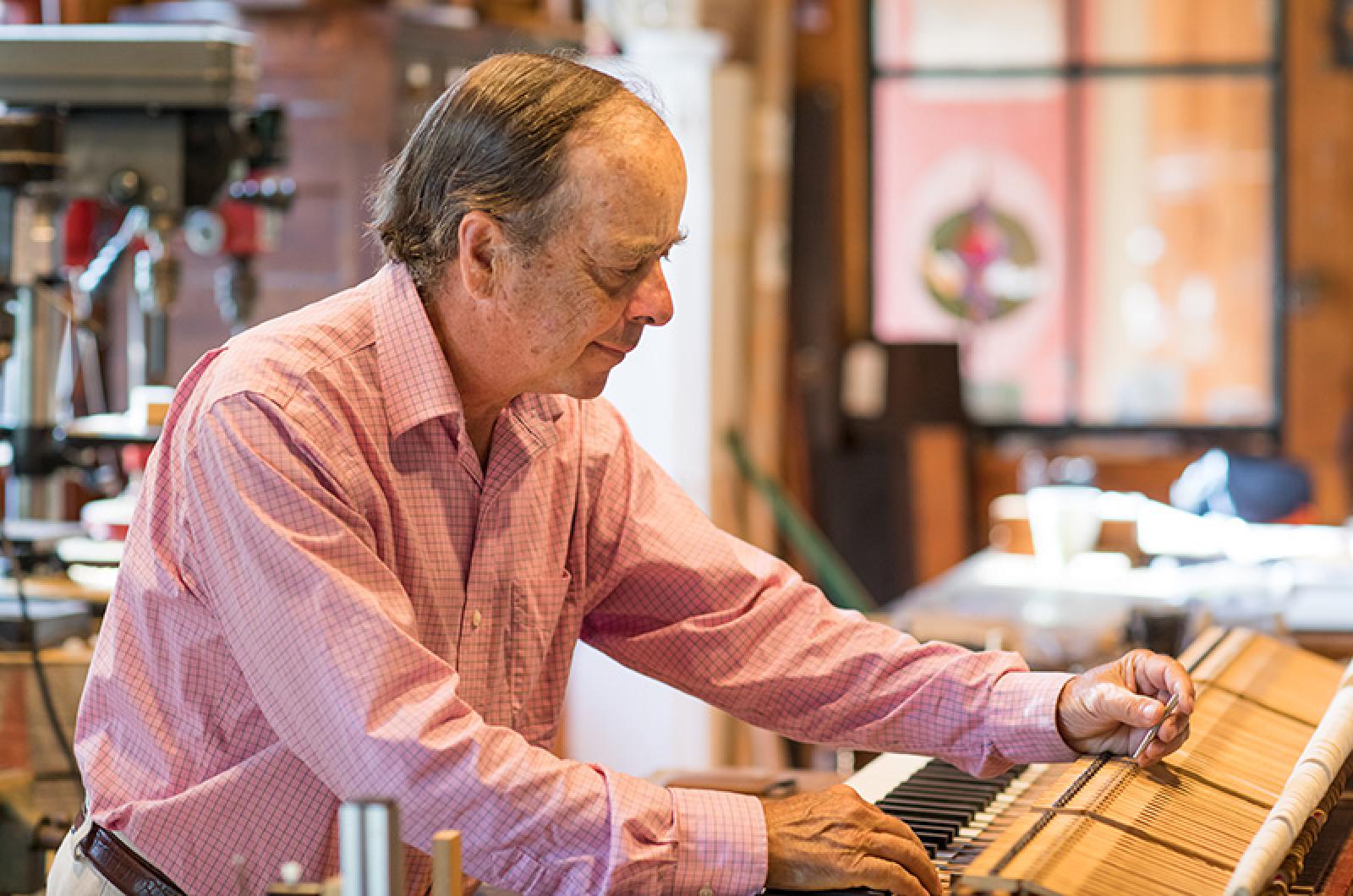Longtime Vineyarder David Stanwood was named to the Piano Technicians Guild Hall of Fame this summer — but he didn’t even know about it until the next day, because he was so tired from traveling to the guild’s annual institute in Tucson that he skipped the awards ceremony.
“The next morning, everyone was congratulating me,” he said. “It’s a great honor.”
Mr. Stanwood joined the guild in the late 1970s, around the same time he moved to the Island. He had just completed two courses of practical study at the North Bennet Street School in Boston, the first year in piano tuning and regulating and the second in rebuilding pianos.
Living in Wareham and working as a piano tuner, Mr. Stanwood soon noticed that his business dropped off in the summer months.
Asking himself “Where does everybody go in the summer?” Mr. Stanwood said, he concluded that a resort community should have work for a piano technician.
But when he asked about Martha’s Vineyard, he recalled, acquaintances told him there was “nothing out there.
“As soon as they said that, I was really interested,” recalled Mr. Stanwood, who said he relishes a challenge.
Placing an ad in the Gazette, Mr. Stanwood received a flurry of calls as soon as the paper came out.
“In March I was flooded with calls, because there was no piano tuner on Martha’s Vineyard and it was really becoming an active place,” he said.
“I just walked into open territory, and never looked back.”
The Vineyard’s quiet winters have kept Mr. Stanwood free from distractions so he can work on his inventions, including an experimental keyboard device, called an action, that modifies the level of force a pianist must exert to strike sound from the keys.
Mr. Stanwood’s experimental action has been praised by pianists including classical star Richard Goode and improviser Keith Jarrett, who used it to record an album after he was too weakened by illness to attack the keyboard with his usual force.
In the 2009 documentary film Miracle in a Box, which traces the restoration of a vintage grand piano to concert condition, Mr. Stanwood appears and discusses his variable keyboard action, which is based on a equation in a system he has trademarked as Precision Touch Design.
“A lot of people knew I did something special, but they didn’t really understand it until they saw this film,” he said.
Piano companies, however, “are still afraid of it,” he said. “They’re still limited by the traditional technology.
Mr. Stanwood said some private small piano makers use the action, but industry leaders like Steinway and Yamaha do not. He hopes the new award will move him closer to mainstream recognition.
“When I started out doing experimental stuff — in this very traditional business, it’s tough,” he said. “I went from fringe to core central.”
And Mr. Stanwood continues to innovate. Unaware of his hall of fame induction, he was at the piano technicians institute in Tucson to present a paper on a new table he has developed for his touch design system.
“The work I’m doing now greatly simplifies and removes the mathematics,” he said.
He is also developing a copper weighting system for piano keys, to replace the traditional lead weights.
“The copper is beautiful. It has a vibrating quality — like a healing quality — to it, and it’s really wonderful to work with,” he said.
His induction into the Piano Technicians Guild Hall of Fame, Mr. Stanwood said, “helps bring attention to my work and brings credibility to my work.
“I’m just getting started.”







Comments (3)
Comments
Comment policy »